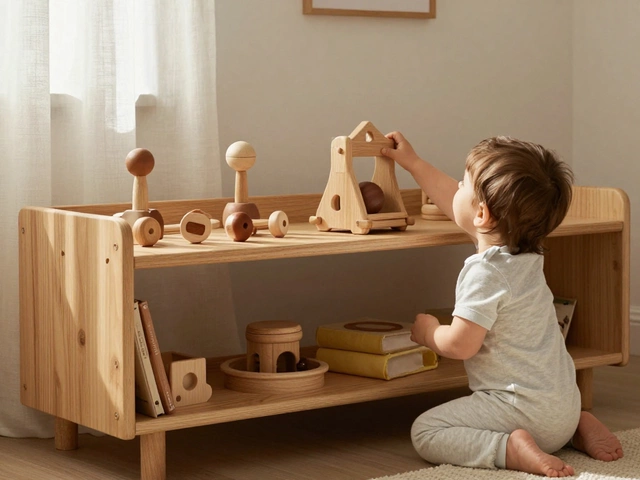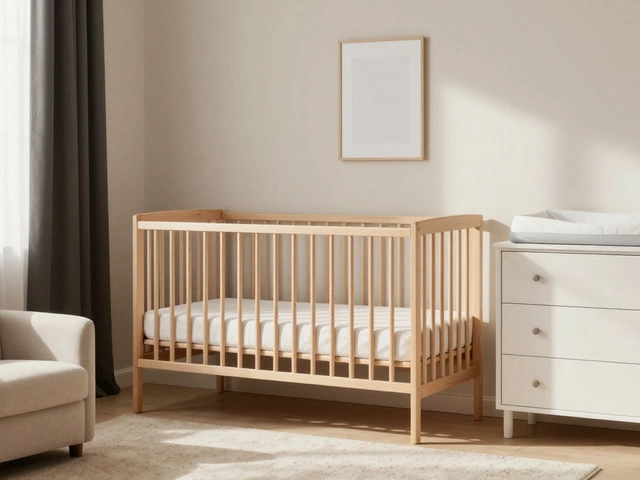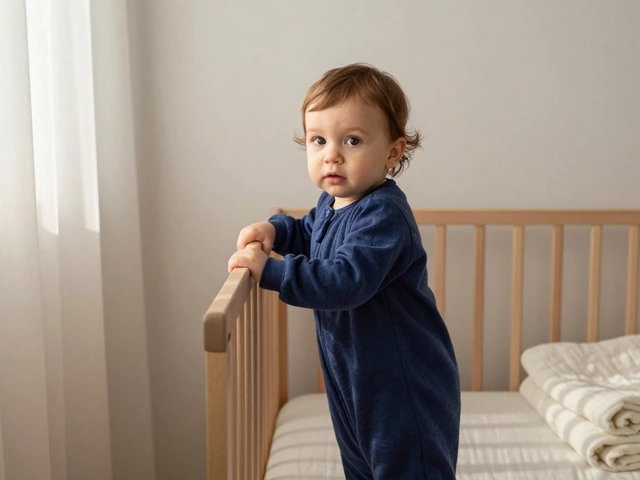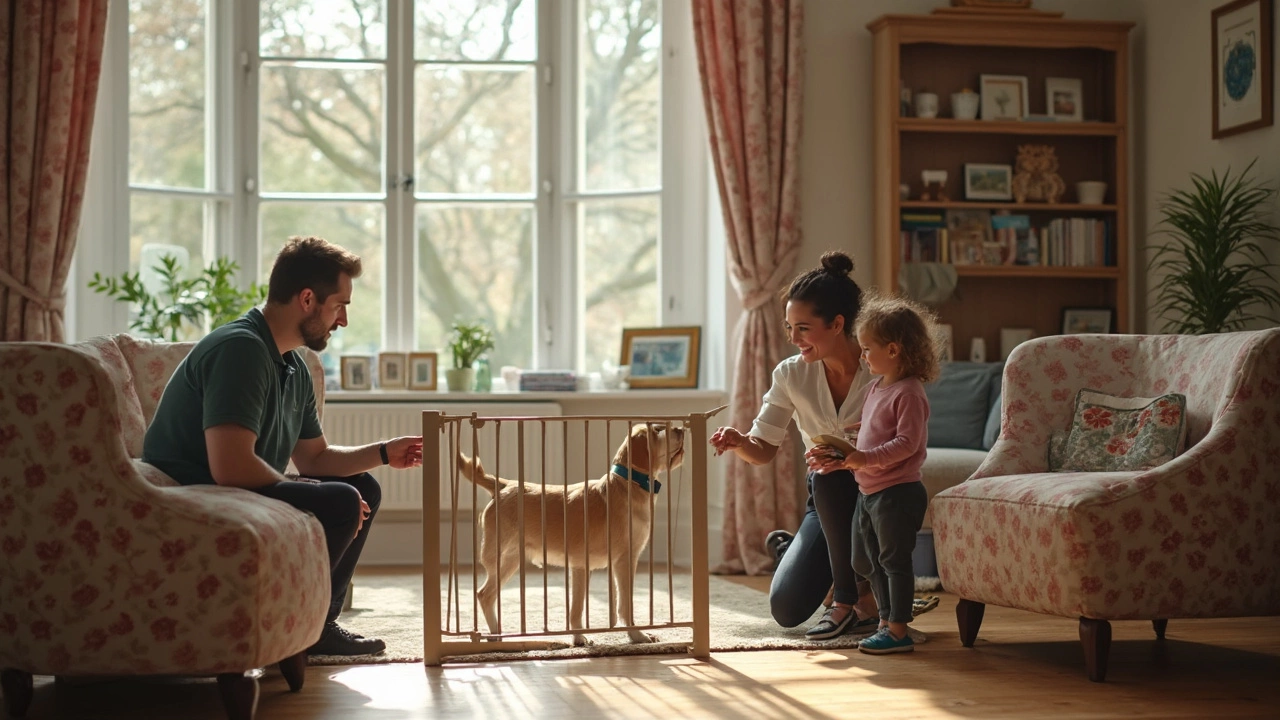
Wondering what the best height for a dog gate should be? Well, you're not alone! The height truly matters, especially if you're juggling between keeping your playful pooch and curious toddler safe. A typical dog gate height ranges from 30 to 42 inches. However, the right choice depends on several variables, including the size of your dog, the agility of your toddler, and even the layout of your home.
Generally, a gate high enough to stop your dog from jumping over is ideal. If you own a larger or more adventurous breed, go for a taller model to prevent any daring escape attempts. If your gate's main goal is child safety without needing to block pets, some folks choose shorter options at about 24 inches, especially for crawling or toddling ages.
Place your gate wisely. The most common spots are at the top or bottom of staircases, along hallways, or across room entrances. Placement can affect height choice since angled or narrow spaces might need custom solutions. We’ll dig into installation tips and material choices shortly, so stick around!
- Understanding the Purpose
- Standard Heights and Variations
- Factors to Consider
- Installation Tips
- Material Matters
- Making the Right Choice
Understanding the Purpose
So, why exactly do you need a dog gate in the first place? It's all about creating safe spaces. For folks with pets and little ones, this is a game changer. A sturdy gate helps keep your toddlers and pets separate when needed, preventing unexpected knocks and tumbles.
For dog owners, these gates are also handy for setting boundaries in the home. Got a puppy who's still learning the ropes? A gate limits their access to rooms filled with tempting no-nos like shoes or furniture. For parents, it's about preventing crawlers or toddlers from venturing into danger zones like staircases or kitchens.
Child Safety First
When we talk child safety gates, we're focusing on peace of mind. Proper gate placement can effectively keep small children away from stairs and other risks when a parent can't be on constant watch. This way, your home becomes a safer playground for kiddos.
- Top of stairs: Essential to avoid dangerous falls.
- Between rooms: For pet-free play areas.
- Around hazards: Like fireplaces and kitchens.
Pet Boundaries
Pets might be family, but they don't always know where they should or shouldn't go. Whether your dog is big or small, a gate based on the right height is critical to keeping them from an area they might harm themselves or others.
If you’re wondering why height varies, consider this: the bigger the dog, the higher the gate needed. Small dogs may need a minimum of 18 inches, while larger breeds like Labrador Retrievers might require gates over 30 inches high. Durable materials are your friend here since dogs can be surprisingly determined!
Standard Heights and Variations
When it comes to choosing the right dog gate height, understanding standard heights available can help you make a smart decision. Most gates designed to keep pets and children safe come in several height categories to suit different needs.
Common Heights Explained
A standard option you'll often see is around 30 inches. This height works pretty well for small or medium-sized dogs and does a decent job for young babies and toddlers. If you're dealing with a larger or more athletic dog breed, it's wise to go a little taller, often around the 36 to 42-inch range. This is the sweet spot for stopping any Olympics-style jumping over your safety barrier.
Adjustable Options
Many child safety gates also offer adjustable heights. This flexibility lets you adapt the gate as your kid grows or if you get a bigger dog. Some designs include extension pieces, which is super handy if you need that added barrier height without buying a completely new gate.
Specialized Heights
If you have unique needs, there are specialized gates designed for specific scenarios. Extra tall gates over 42 inches exist for homes with particularly large pets or if you’re worried about kids climbing. At the same time, shorter gates, which are about 24 inches tall, are also available. These work nicely in areas where space is constrained, or for pets that simply need a ‘no-go zone’ marked.
Consider Your Space
It’s essential to think about where you'll be installing these gates. For example, let's say you're looking at stairways. You might want a tall gate at the top of the stairs to ensure absolute safety. Meanwhile, other places might not need that extra height, like between rooms, where a medium gate suffices and is more convenient.
Keep these height variations in mind while considering your specific challenges and preferences. Choosing the perfect gate not only gives peace of mind but also ensures everyone in your household, including furry friends, stays safe and happy.
Factors to Consider
When trying to figure out the best height for a dog gate, it's not just about measurements. There are several practical things to weigh in first. Whether it's the size of the dog, the age of the children, or even the materials of the gate itself—each makes a difference.
Size and Breed of Your Dog
Let's talk about dogs. Different breeds have different needs when it comes to gate height. Larger breeds or those with high jumping abilities will need a taller gate, maybe even upwards of 36 inches. Smaller dogs? You might get away with 24 inches.
Ages of Children
If you're using the gate as a child safety gate, think about the child's age and mobility. Babies or toddlers who are just starting to walk might require a gate with a lower height for convenience, but you don't want them to reach over it easily. If they're older, consider a taller option, especially if they're prone to climbing.
Household Layout
Where you're planning to place the gate also matters. A hallway might need a wider gate with optional extensions, while a staircase could need a firmly fixed option with added height for extra protection.
Material and Design
The materials used in dog gates also affect their height. Wooden or metal gates typically offer more sturdy and secure options compared to plastic ones. Think about longevity and durability when selecting your gate material.
Easy Access and Installation
Don't forget the convenience factor. You’ll be using this gate daily, so look for one that isn't a struggle to open, especially while juggling a baby or groceries. Also, check that the installation process is clear or seek professional help if necessary.
| Dog Size | Recommended Gate Height |
|---|---|
| Small Breeds (e.g. Beagle) | 24-30 inches |
| Medium Breeds (e.g. Border Collie) | 30-36 inches |
| Large Breeds (e.g. Labrador) | 36-42 inches |
By keeping these factors in mind, you can make an informed choice and pick a gate that's safe and practical for everyone in the household.
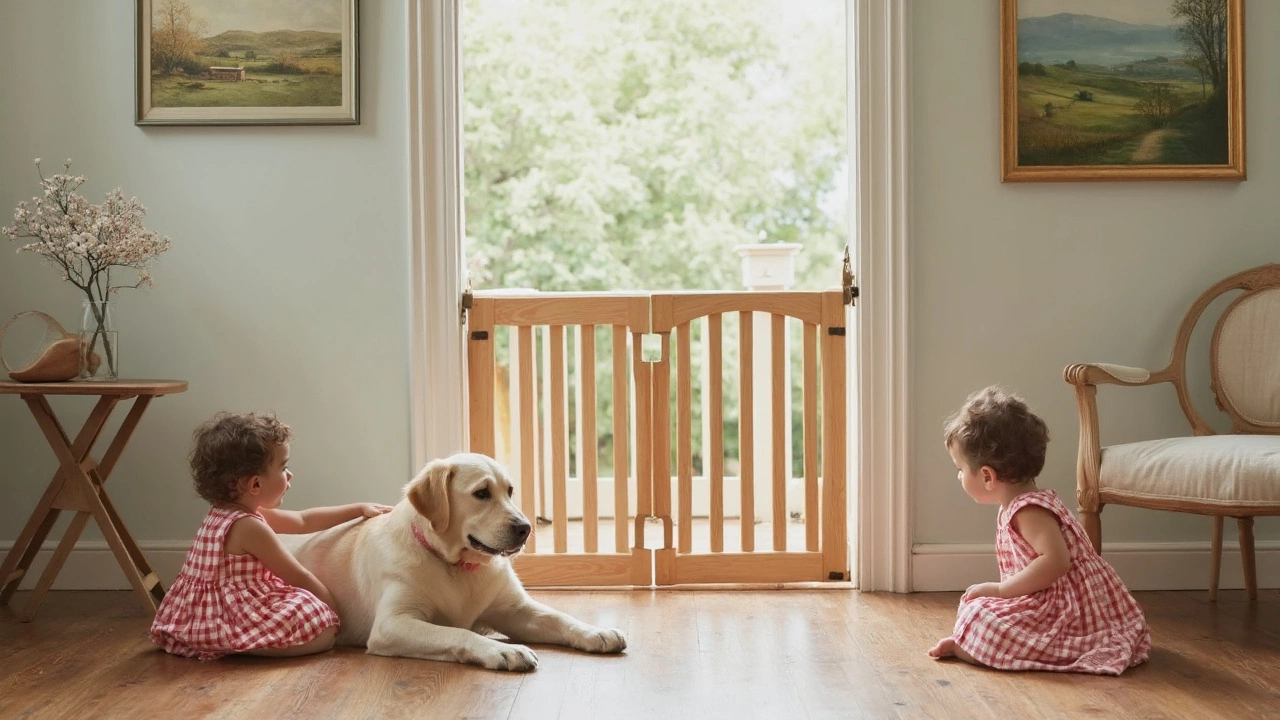
Installation Tips
So, you've got your dog gate and now it's time to set it up. Let's make sure it's done right to maintain safety and functionality. First off, check your walls or door frames for any potential obstacles. You want a smooth surface to attach your gate, making sure it's both secure and damage-free.
When it comes to securing it, you generally have two choices: hardware-mounted or pressure-mounted. Pressure-mounted gates are friendly for renters since they don't require screws. They're great for doorways and less hazardous areas. However, if you need extra security, especially for stairs, a hardware-mounted gate is the better option. These types are far less likely to be dislodged if your pooch or child decides to test their strength!
Steps for Installation:
- Measure the Opening: Using a tape measure, get the accurate width of the space you want to secure. This ensures your gate fits snugly.
- Select the Right Type: Consider where you're placing the gate. For stair tops, go for hardware-mounted. For living room openings or temporary setups, pressure-mounted should do the trick.
- Gather Tools: Depending on the gate type, you might need a drill, screwdrivers, or sometimes just elbow grease! Most gates come with an instruction manual, so give that a glance.
- Install the Mounting System: For hardware-mounted, mark the screw holes, drill, and secure brackets. Pressure-mounted requires aligning the gate and tightening the tension knobs until secure.
- Test Stability: Before calling it a job well-done, give it a gentle push or pull. It shouldn’t budge easily. This is crucial for child safety gates where little ones might lean or push.
Fun fact—according to a 2024 survey, two out of three pet owners in the UK prefer pressure-mounted gates for their versatility and ease of use. But remember, dog gates aren’t one-size-fits-all. Tailor the type and installation to your home’s specific needs to keep both your kiddos and pets safe.
Material Matters
When choosing the perfect dog gate height for your home, the material is just as important as the height itself. The right material can enhance safety, aesthetics, and durability. Let’s break down the most common materials you’ll find and why they matter.
Wood
Wood gates are classic and blend well with home decor. They are sturdy and provide a secure barrier, especially for medium to large-sized dogs. However, they may not be the best choice if your dog is a chewer, as persistent pups might find them a tasty (and destructive) snack.
Metal
Metal gates, often made from steel or aluminum, are incredibly sturdy and perfect for larger or more rambunctious dogs. They can withstand a lot of force and many come with a powder-coated finish to prevent rusting. They might not offer the same charm as wood, but they make up for it in strength.
Plastic
Plastic gates are usually lightweight and easier to install. They work well for smaller dogs and toddlers, and are a budget-friendly option. But, they can lack the durability needed for larger dogs or those who like to jump.
Fabric
Fabric gates are a softer option, often used when portability is key. They’re easy to pack up and move, making them great for on-the-go families. Just keep in mind they aren’t as strong as their wooden or metal counterparts.
| Material | Strength | Style | Best For |
|---|---|---|---|
| Wood | High | Classic | Homes with existing wood decor |
| Metal | Very High | Industrial | Larger dogs |
| Plastic | Moderate | Varied | Small dogs and indoor use |
| Fabric | Low | Casual | Travel and portability |
Choosing the right material not only ensures the gate does its job effectively, but also complements your home. Whether you’re going for a rustic look with wood, or need the hardcore security of metal, there's a child safety gate material to suit your needs. Consider where the gate will be used and the personality of your pet before making a final decision.
Making the Right Choice
So, how do you make the best call when selecting a dog gate height? It's all about striking a balance between functionality and safety. Start with the obvious—how tall is your dog when standing on its hind legs? You don't want a gate they can hop over easily. For smaller breeds or puppies, a 30-inch gate often works well. Medium-sized dogs might need something around 36 inches, while larger breeds truly benefit from 42 inches or more.
Let's not forget the human factor! If you’re primarily concerned about child safety, the focus shifts slightly. The gate should be high enough to keep little adventurers from climbing over yet easy for adults to open. There are gates designed with features like easy one-hand release mechanisms which can be a lifesaver when you're juggling a million things at once.
Considering Versatility
Some gates are adjustable, featuring extension kits which can be a game-changer if you plan to use the gate in different locations or for a growing pet. Versatile gates can adapt to various spaces and situations without needing a whole new setup.
Reviewing Materials and Costs
Choices are plentiful, from wood and metal to durable plastic. Wood can be elegant and homely, metal provides strong security, and plastic is generally easy to clean and manage. Prices typically vary between £20 and £80, correlating with features and build quality. When calculating your budget, prioritize the factors most relevant to your household needs.
Reading the Reviews
Before making a purchase, glance through customer reviews. These often offer insights you might not find from the manufacturer’s description alone. Look out for comments on durability, ease of installation, and how effectively it contains both pets and children.
Making the right choice in a child safety gate involves a good mix of measuring up your needs and learning from others' experiences. Take your time, assess honestly, and you’ll feel at ease bringing home that new gate.


